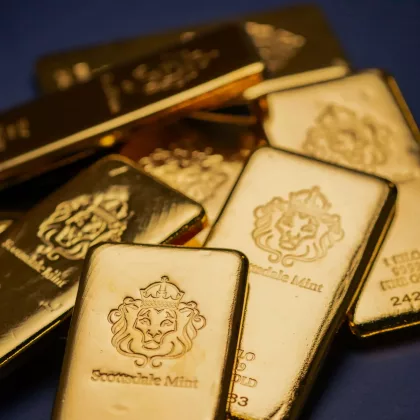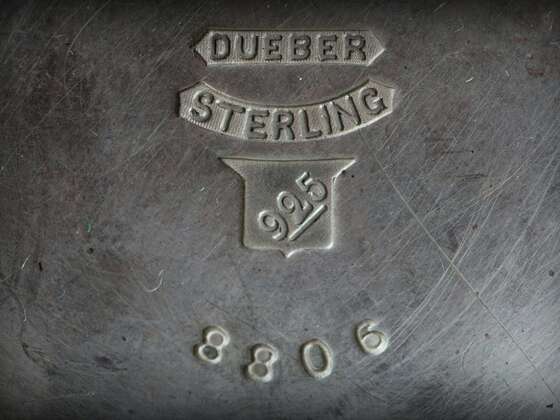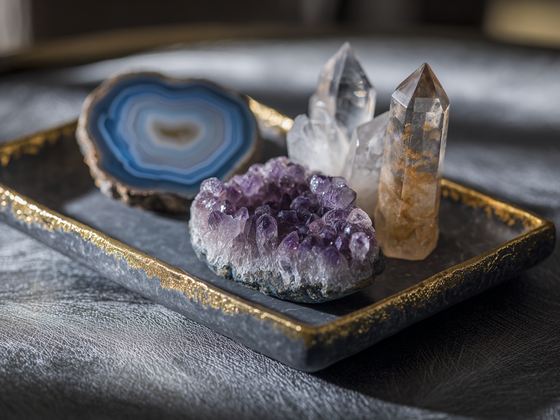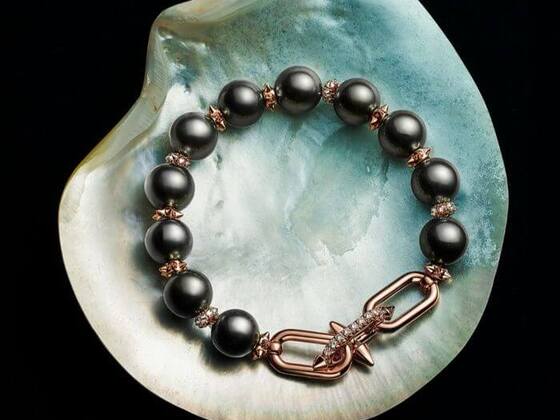Investing in Physical Gold and Silver is a time-honoured strategy for protecting your wealth, hedging against inflation, and diversifying your portfolio. These precious metals have captivated investors for centuries with their enduring value and universal appeal. Whether you’re new to the world of precious metals or looking to expand your investment horizons, this comprehensive guide will help you confidently start investing in physical gold and silver.
Understand Why You’re Investing in Gold and Silver
Before you make a purchase, clarify your goals. Many investors turn to gold and silver to protect their wealth from inflation, diversify their assets, or simply for the security of owning a tangible asset that has held value for millennia. Precious metals are especially appealing because they are simple to understand and do not require specialised financial knowledge.
- Tangible Security: Unlike stocks or digital assets, physical metals are real, tangible items you can hold in your hand. They’re not dependent on a company’s health or a currency’s stability.
- Inflation Hedge: Gold and silver have historically maintained their value during times of inflation and economic uncertainty, making them a reliable store of wealth.
- Portfolio Diversification: Adding precious metals to your investment mix can help reduce risk and balance your portfolio, especially when other assets are underperforming.
- Global Acceptance: Gold and silver are recognised and valued worldwide, making them easy to trade or sell in virtually any country.
Step-by-Step Guide to Investing in Gold and Silver
1. Decide What to Buy: Coins or Bars
One of the first and most important decisions when building a precious metals portfolio is choosing between coins and bars, or a strategic mix of both. Each option has distinct advantages depending on your investment goals, budget, and preferences.
Coins: Recognised, Liquid, and Sometimes Tax-Efficient
Government-minted coins are among the most popular choices for investors due to their recognizability, liquidity, and aesthetic appeal. Some of the most widely traded bullion coins include:
- UK Britannia & Sovereign – Highly liquid in Europe, with potential capital gains tax exemptions for UK investors.
- American Eagle (U.S.) – Backed by the U.S. government, making them extremely easy to buy and sell.
- Canadian Maple Leaf – Known for its high purity (9999 fine gold), a favourite among collectors and investors.
- South African Krugerrand – One of the first modern bullion coins, widely recognised globally.
Advantages of Coins:
- Easier to sell – Recognised worldwide, making them highly liquid.
- Collectable value – Some coins appreciate beyond their metal content due to rarity or design.
- Potential tax benefits – Certain coins (like Britannias or Sovereigns in the UK) may be exempt from capital gains tax.
Bars: Lower Premiums, Ideal for Larger Investments
Bars are typically favoured by investors looking to maximise metal content per dollar spent, as they usually carry lower premiums over the spot price compared to coins. They come in a wide range of sizes:
- Small bars (1g to 100g) – Affordable entry points for new investors.
- Mid-sized bars (250g to 500g) – A balance between affordability and value.
- Large bars (1kg and above) – Best for serious investors due to lower premiums, but may be harder to sell quickly.
Advantages of Bars:
- More metal for your money – Lower premiums mean you get closer to the actual spot price.
- Compact storage – Larger bars take up less space relative to their metal content.
- Purity assurance – Reputable refiners (like PAMP, Valcambi, and Credit Suisse) produce high-quality, certified bars.
Which Should You Choose?
- Beginners may prefer starting with a few well-known coins (like American Eagles or Canadian Maple Leafs) to get comfortable with buying, storing, and selling.
- Larger investors might allocate a portion of their portfolio to bars to reduce premiums and increase cost efficiency.
- A balanced approach—mixing coins and bars—can provide liquidity, diversification, and cost savings.
Final Tip: Always purchase from reputable dealers to ensure authenticity, and consider storage solutions (such as home safes or professional vaults) based on the size of your holdings.
2. Choose a Reputable Dealer
Selecting a trustworthy dealer is one of the most critical steps in building a precious metals portfolio. Since counterfeit bars and coins do exist, buying from a reputable source ensures you receive genuine, high-quality products at fair market prices. Here’s how to identify a reliable dealer:
Key Indicators of a Trustworthy Dealer
- Industry Accreditation & Memberships
- Look for dealers affiliated with recognised industry organisations, such as:
- London Bullion Market Association (LBMA) – The global authority for gold and silver standards.
- Professional Numismatists Guild (PNG) – Ensures ethical practices in coin dealing.
- International Precious Metals Institute (IPMI) – Promotes integrity in the bullion trade.
- Government-backed mints, such as The Royal Mint (UK), U.S. Mint, or Perth Mint (Australia), are also highly reliable sources.
- Look for dealers affiliated with recognised industry organisations, such as:
- Transparent Business Practices
- Transparent pricing (including premiums over spot price).
- Detailed product information (weight, purity, and manufacturer).
- Secure payment options (avoid dealers who only accept untraceable methods, such as cryptocurrency or wire transfers, without buyer protection).
- Positive Customer Reviews & Reputation
- Check independent review platforms (Trustpilot, Google Reviews, BBB).
- Look for long-standing businesses with a track record of satisfied clients.
- Avoid dealers with frequent complaints about delays, fake products, or refusal to honour buybacks.
- Buy-Back Policies & Liquidity
- A reputable dealer should clearly outline their buy-back terms (some offer guaranteed repurchase at market rates).
- Fast, insured shipping and secure storage options (if applicable).
Where to Buy Precious Metals
- Government Mints (Most Secure, but Often Higher Premiums)
- The Royal Mint (UK)
- U.S. Mint (American Eagles)
- Royal Canadian Mint (Maple Leafs)
- Perth Mint (Australia)
- Established Bullion Dealers (Competitive Pricing, Wide Selection)
- APMEX (U.S.)
- JM Bullion (U.S.)
- BullionByPost (UK)
- GoldSilver (International)
- Banks & Specialist Brokers (Some Offer Vault Storage)
- HSBC, UBS, and Deutsche Bank (for high-net-worth investors)
- Specialised precious metals brokers (often provide portfolio advice)
Red Flags to Avoid
❌ Too-good-to-be-true prices (likely counterfeit products).
❌ Pressure sales tactics (legitimate dealers won’t rush you).
❌ No physical address or unclear ownership (risk of scams).
By taking these precautions, you can minimise risk and build a secure, valuable precious metals portfolio.
3. Make Your Purchase
Once you’ve selected your preferred coins or bars and chosen a trusted dealer, the purchasing process is secure and straightforward. Follow these steps to ensure a smooth transaction:
Step-by-Step Buying Process
- Create an Account (Online) or Visit in Person
- When buying online, register an account with the dealer to track your order and facilitate future purchases.
- For local purchases, visiting a physical bullion shop or showroom allows you to inspect the products before making a purchase.
- Select Your Products & Add to Cart
- Browse the dealer’s inventory and choose your desired coins, bars, or rounds.
- Pay attention to:
- Purity (e.g., .999 fine gold or .9999 silver)
- Weight & Size (1 oz coins vs. 10 oz bars)
- Premiums over spot price (compare with other dealers)
- Add items to your cart and review the quantities before checking out.
- Choose Payment Method
- Bank wire transfer (most secure, often has lower fees)
- Credit/debit card (convenient, but may have limits & higher premiums)
- Cryptocurrency (some dealers accept Bitcoin, but offers less buyer protection)
- Check or money order (slower processing time)
- PayPal (rare, usually for smaller purchases)
- Select Delivery or Storage
- Home Delivery (Most Common for Small Purchases)
- Ensure insured, tracked shipping (especially for high-value orders).
- Requires a secure, discreet delivery location (avoid porch theft).
- Vault Storage (For Larger Holdings)
- Many dealers partner with professional storage facilities (e.g., Brinks, Loomis).
- Offers full insurance, audit reports, and easy liquidation options.
- Ideal for investors who prefer to avoid physical possession risks.
- Home Delivery (Most Common for Small Purchases)
Pro Tips for a Smooth Purchase
✔ Save All Documentation – Store invoices, assay certificates, and receipts in a secure location. These are crucial for:
- Resale verification (proves authenticity to future buyers).
- Insurance claims (if lost or stolen).
- Tax reporting (capital gains calculations).
✔ Verify Your Order Upon Delivery
- Inspect packaging integrity (signs of tampering?).
- Check weight, design, and purity markings against the dealer’s description.
- Use a precious metals tester (optional) if buying high-value bars.
✔ Start Small for First-Time Buyers
- Consider a test purchase (e.g., a single 1 oz silver coin) to evaluate the dealer’s service before larger orders.
What to Do After Receiving Your Metals
- Store Securely – Use a home safe, bank deposit box, or professional vault.
- Insure Your Holdings – Check if your homeowner’s policy covers bullion or if you need separate insurance.
- Track Market Prices – Decide whether to hold for the long term or sell during price surges.
By following this structured approach, you can confidently purchase physical precious metals while minimising risks and maximising value.
4. Plan Secure Storage
Owning physical precious metals comes with the responsibility of safeguarding your investment. Unlike digital assets, gold and silver require secure, reliable storage to protect against theft, damage, or loss. Below are the most common storage options, along with their pros, cons, and best-use scenarios.
1. Home Storage (For Small to Medium Holdings)
Best suited for: Investors seeking immediate access to their metals and prioritising privacy.
Options:
✅ High-Quality Home Safe
- Features to look for:
- Fireproof & waterproof (UL-rated for at least 1 hour of fire resistance).
- Bolt-down capability (prevents theft by securing it in place).
- Discreet placement (avoid obvious locations, such as master bedrooms).
- Ideal for: Storing a few coins or small bars (up to ~20 oz of gold or equivalent value).
✅ Hidden Compartments & Diversion Safes
- Examples: False books, floor or wall safes, or disguised containers.
- Pros: Low visibility to intruders.
- Cons: Limited space; not fireproof.
Security Tips for Home Storage:
✔ Never disclose holdings—even to friends/family unnecessarily.
✔ Use decoys (e.g., a cheap visible safe with minimal valuables).
✔ Install a security system (cameras, alarms) if storing significant amounts.
2. Bank Safe Deposit Boxes (For Medium Holdings)
Best for: Investors who prioritise maximum security over frequent access.
Pros & Cons:
✔ Highly secure—banks have advanced alarms, surveillance, and reinforced vaults.
✔ Insurance options—some banks offer coverage (but verify limits).
❌ Limited access—only during bank hours; sealed during emergencies.
❌ Not legally private—governments can freeze/confiscate contents in extreme cases.
Best Practices:
✔ Use tamper-evident bags to detect unauthorised access.
✔ Keep an inventory list (photos, serial numbers) stored separately.
3. Professional Third-Party Vaults (For Large Holdings)
Best for: High-net-worth investors or those holding bullion worth $50,000+.
Types of Vaults:
🔒 Allocated Storage
- Your metals are physically segregated and identified as yours.
- Example: Brinks, Loomis, or dealer-affiliated vaults.
🔒 Non-Allocated (Pooled) Storage
- Metals are held in a shared pool; you own a claim, not specific bars.
- Higher risk (if the provider fails, you’re an unsecured creditor).
Advantages:
✔ Fully insured (often included in storage fees).
✔ Audit reports (regular checks on your holdings).
✔ Easy liquidation (some dealers allow instant selling from vaults).
Final Checklist for Secure Storage
- Match storage to portfolio size—don’t overpay for vaults if you only own a few coins.
- Verify insurance coverage—whether at home, in a bank, or in a vault.
- Document everything—photos, receipts, and serial numbers (store them both digitally and physically).
- Review your storage annually and adjust it as your portfolio grows.
By carefully selecting the right storage solution, you can protect your metals from theft, disasters, and financial risks while maintaining liquidity for future sales.
5. Insure Your Investment
Physical precious metals are a high-value asset class that requires proper insurance coverage to protect against theft, loss, or damage. Unlike cash or digital investments, bullion and coins are irreplaceable if stolen, making insurance a critical part of your wealth preservation strategy.
Why Insurance is Essential
- Homeowners’ policies often have low limits (typically $1,000–$2,500 for bullion).
- Specialised coverage ensures full reimbursement at the current market value.
- Third-party storage does not always include automatic insurance; verify the terms before depositing.
Types of Precious Metals Insurance
- Standalone Bullion Insurance
- Offered by specialist insurers (e.g., Jewelers Mutual, Lloyd’s of London).
- Covers full market value with options for scheduled (itemised) or blanket coverage.
- Typically costs 1–2% of the insured value per year.
- Storage Facility Insurance
- Many professional vaults (Brinks, Loomis, Perth Mint) include insurance in storage fees.
- Confirm whether coverage is allocated (per item) or pooled (shared risk).
- Rider to Homeowner’s/Renter’s Policy
- Some insurers allow adding a “valuables” rider for metals.
- Requires appraisals or purchase receipts for high-value items.
Key Considerations When Insuring Metals
✔ Appraisal & Documentation – Keep dated receipts, assay certificates, and photos of items.
✔ Storage Requirements – Some policies mandate a rated safe or professional vault.
✔ Global Coverage – If travelling with metals, ensure they’re insured in transit.
Pro Tip: Periodically re-evaluate coverage as metal prices rise to avoid being underinsured.
6. Track and Manage Your Holdings
Precious metals are dynamic investments, with prices influenced by inflation, geopolitics, and currency fluctuations. Actively managing your portfolio ensures you maximise returns and align with your financial goals.
Monitoring Market Value
- Real-Time Price Tracking:
- Use apps (Kitco, BullionVault) or financial news sites (Bloomberg, Reuters) for live spot prices.
- Track premiums/discounts for specific coins/bars (e.g., American Eagles vs. generic rounds).
- Market Alerts:
- Set price notifications (e.g., if gold hits $2,300/oz) to time buys/sells.
Active vs. Passive Management Strategies
- Long-Term “Stack & Hold” Approach
- Focus on accumulating metals over decades as a hedge against inflation.
- Ideal for investors who avoid market timing.
- Tactical Trading
- Buy during dips (recessions, Fed rate cuts) and sell at peaks (high inflation, crises).
- Requires closer market monitoring and discipline.
Portfolio Review & Goal Setting For Investing in Gold and Silver
- Annual Rebalancing:
- Adjust gold/silver ratios (e.g., 70/30) based on market outlook.
- Consider taking profits if metals surge beyond target allocations.
- Dollar-Cost Averaging (DCA):
- Invest fixed amounts monthly or quarterly to smooth out price volatility.
- Exit Strategy:
- Define price targets or life events (retirement, inheritance) for selling.
Pro Tip: Use a spreadsheet or portfolio tracker (e.g., Apmex Portfolio Manager) to log purchases, sales, and performance.
Final Checklist for Ongoing Management
✅ Insurance: Verify coverage annually; update for new purchases.
✅ Storage: Reassess security as holdings grow (e.g., upgrade from home safe to vault).
✅ Market Tracking: Dedicate 15 mins/week to check trends.
✅ Strategy Review: Adjust goals every 1–2 years based on economic changes.
By combining robust insurance with active portfolio management, you can protect and grow your precious metals investment with confidence.
Tips for Building a Precious Metals Portfolio
Building a well-balanced precious metals portfolio requires careful planning and informed decision-making. Here are some key strategies to help you get started and maximise your investment:
- Start Small: You don’t need to invest a fortune right away. Begin with a few coins or a small bar to familiarise yourself with the market. As you gain confidence and knowledge, you can gradually expand your holdings. This approach minimises risk while allowing you to learn the nuances of buying, storing, and selling precious metals.
- Diversify: A strong portfolio spreads risk across different assets. Consider holding both gold and silver, as they often perform differently under economic pressures. Gold is a stable store of value, while silver has more industrial uses, leading to higher volatility.
- Stay Informed: The precious metals market is influenced by economic trends, geopolitical events, and monetary policies. Follow financial news, subscribe to industry newsletters, and join online forums or investor communities to stay updated.
- Understand Costs: Investing in precious metals involves more than just the spot price. Be aware of dealer premiums, which vary depending on the product and seller. Additionally, factor in storage fees (for home safes or professional vaults), insurance costs, and potential taxes. Some government-minted coins, like American Eagles or Canadian Maple Leafs, may be exempt from capital gains tax in certain jurisdictions, providing a financial advantage.
Pros and Cons of Investing in Gold and Silver at a Glance
| Pros | Cons |
| Tangible, real asset with intrinsic value | Requires secure storage and insurance |
| Hedge against inflation and currency risk | Less liquid than digital assets |
| No counterparty risk | Dealer premiums and buy/sell spreads |
| Simple and private | Storage/insurance costs can add up |
| Global acceptance and easy to trade | Price can be volatile in the short term |
Final Thoughts on Investing in Gold and Silver
Investing in physical gold and silver is a rewarding way to add stability and security to your financial future. By starting small, buying from reputable dealers, and storing your metals safely, you can enjoy the peace of mind from owning assets with a proven track record of value and resilience.
Whether you’re a cautious beginner or a seasoned investor, precious metals offer a unique blend of tradition and opportunity. Take your time, research, and enjoy the journey of building your personal treasure trove.
If you’re interested in understanding what influences the value of your gold investments, don’t miss our in-depth article What Drives the Price of Gold?. It breaks down the key factors, like supply and demand, central bank activity, inflation, and global events, that impact gold prices, giving you valuable insights to make smarter investment decisions.
Ready to get started? Begin exploring reputable dealers and consider your first purchase today; your future self may thank you!
FAQ’s
Both coins and bars have advantages. Coins (like the UK Britannia or American Eagle) are highly liquid and sometimes offer tax benefits, while bars usually have lower premiums and are better for investing larger sums. Beginners often start with well-known coins to familiarise themselves with the market.
Yes, insurance is recommended whether you store metals at home or in a professional facility. Specialist insurers offer policies tailored for bullion and coin collections.
Monitor gold and silver prices through financial news sources or apps. Review your investment strategy regularly and consider your long-term goals.
Consider dealer premiums, storage fees, insurance, and potential taxes. Some coins may be exempt from capital gains tax in certain countries.
Ready to Start Your Gemstone Journey?
Don’t wait to discover the world of gemstones! Explore these essential reads right away.
Fascinated by this article and want to deepen your gemstone expertise? Dive into our comprehensive Gemstone Encyclopedia. Here, you’ll discover detailed information about hundreds of precious and semi-precious stones, including their properties and values.
For those interested in the rich cultural significance and fascinating stories behind these treasures, our History section offers captivating insights into how gemstones have shaped civilisations. Or perhaps you’d like to learn more about birthstones?
And if you’re considering gemstones as more than just beautiful adornments, visit our Precious Metal Investing guide. Here you will learn how these natural wonders can become valuable additions to your investment portfolio.
Related articles
- Gemstone Investments Expert 2025 Outlook
- Gemstones That Increase in Value Over Time
- Metal Investing Strategy in 2025
- How to Start Investing in Gold and Silver
- Gold IRA in 2025
References
- Alden, Lyn (2025). How to Invest in Gold and Silver: Precious Metals Investing Guide
- Royal Mint (2025). An Introduction to Gold Investment
- Bullion by Post (2025). How to Invest in Gold For Beginners – An Introduction
- Green, Nick (2 April 2025). How to invest in gold and other precious metals in the UK
- McEvoy, Dan (17 March 2025). How to invest in gold
- The Entrust Group (19 December 2024). Investing in Physical Gold vs Gold ETFs: Pros and Cons
- Tavex Buillion (2025). How to Build Up a Habit of Investing in Physical Gold
- Sacchitello, Michael (30 September 2024). How to Invest in Gold and Silver
- EU Business news (25 April 2023). The Benefits And Risks Of Investing In Physical Gold






![Pigment analysis of Raphael's masterpiece[7][8] reveals the usual pigments of the renaissance period such as malachite mixed with orpiment in the green drapery on top of the painting, natural ultramarine mixed with lead white in the blue robe of Madonna and a mixture of lead-tin-yellow, vermilion and lead white in the yellow sleeve of St Barbara.](https://gemstonesinsider.com/wp-content/uploads/2025/09/Raphael-Madonna_Sistine_sm-560x420.jpg)



